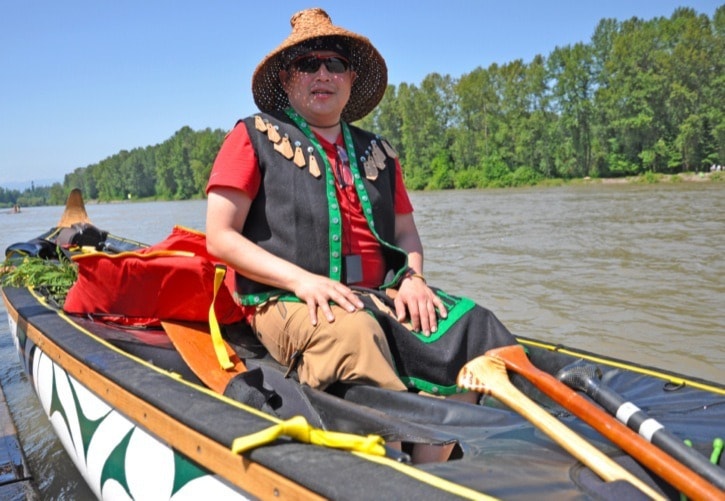Today I am fulfilling my promise as a witness, and passing along a story. It is a story set in history that will carry today’s message of hope and a warning to the future.
Last weekend, I was honoured to have been invited to a breakfast and blessing ceremony for the canoe crew which departed Sunday from the Kwantlen tribal lands in Fort Langley on a 90-day, 1,200 kilometre journey along the west coast to Alaska.
We are to meet at the new Kwantlen Cultural Centrer, a striking western red cedar building designed as a gathering place for such occasions. We can hear the dramatic drumming and uplifting singing coming from within. We hesitate at the door.
Do we wait until they finish, do we just walk in? If this were a football stadium or a hockey rink we would know what to do but here, even though they are our neighbours, we are unsure of the cultural procedures.
Chief Marilyn Gabriel is there and her gentle smile and open arms beckon us in. She asks us to make ourselves comfortable. We soon learn that there are many parts to the ceremony we will see today. We will be welcomed and fed, we will be asked to listen and learn and we will “do the work” as we bless the canoe and the paddlers.
Some of us are asked to be witnesses because the Kwantlen have no written language and their history has been passed down by families that have attended such ceremonies over the centuries. Often families from different areas would gather in the long houses for weeks at a time as the stories were passed.
After the meal, which is prepared to last us all day, we are entertained and educated. To us, at first, the drumming and the songs sound much the same but we are taught that the differences in the cadence of the drum beat and the rise and fall of the voices have significant meanings.
The canoe for this journey sits outside and we surround it to gather prayers to send along. Each of us has a small cedar bough that we will place in a blanket, along with a prayer, that will be taken with the paddlers. As the Healer begins her blessing, a lone eagle lands on the largest bough of the tallest tree and watches for a bit, gives approval, and carries on down river. The ancestors have made their appearance and have gone on ahead.
Back inside the stories continue. We learn that the river is like an old woman whom we must respect. Those that don’t suffer the consequences.
Brandon Gabriel is one of the paddlers and he shares that the purpose of the journey is to shed light on the pristine coastlines, fragile ecosystems, and the sustainability of remote and small communities that they will visit along the way. We must teach our children, to educate them that the beauty of this place will disappear, if we don’t look after it.
The time for the send-off has arrived. As we watch them pull away we are proud that we have sent a small piece of each of us along. We can only hope that the gentle dip and swing of their paddles will be louder than the oil tanker propellers.
We wish them calm seas, warm sunshine and a wind at their backs. At least that’s what McGregor says.
